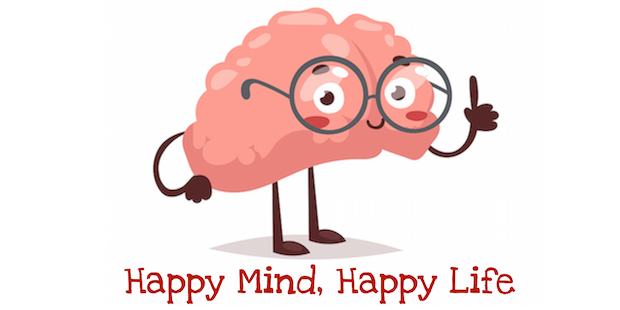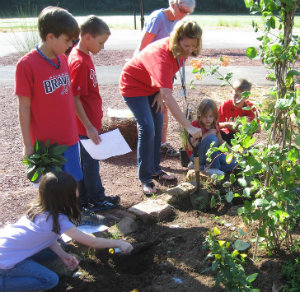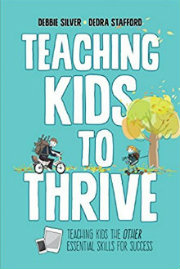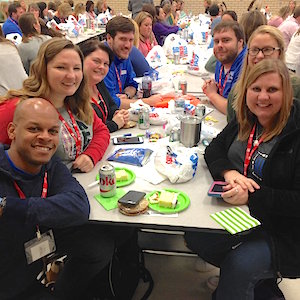4 Tips for Teaching Students SEL Skills

Unless you teach on a remote island somewhere with no access to the internet or the outside world (so you are probably not reading this!), you are familiar with the renewed interest of researchers and educators in social-emotional learning and how it affects our students.
Several factors have contributed to the significant attention SEL is getting – including advancements in neuro and cognitive science, recent ESSA regulations, and a 2011 meta-analysis published in the journal Child Development that showed an 11 percentile gain in academic achievement for students who participated in well-implemented SEL programs versus students who didn’t.
‘
As a result, much has been written about the importance of implementing SEL skills in the classroom, but until now resources, tips, and tools for teachers have not been plentiful.
Recently my colleague Dedra Stafford and I began researching low cost, low prep ways educators can incorporate SEL skills into the curriculum. We started by identifying those abilities we thought are most important, malleable, and teachable. We included:
- mindfulness,
- command of executive functions,
- self-efficacy and growth mindset,
- perseverance,
- resiliency and optimism,
- integrity,
- responsibility,
- empathy, and
- gratitude
We decided to group them under the heading Thrive skills. Thrive skills are proficiencies that go beyond mandatory academic competencies and provide foundational life skills that will help students succeed both in and beyond the classroom.
So how do we teach Thrive skills? Here are some tips to get you started . . .
Tip #1 – Teach and Practice Mindfulness
Mindfulness is a good place to begin working on SEL skills. For no cost (unless you want to buy a top-of-the-line Tibetan bowl) you can instruct students to take a moment at the beginning of class to collect their thoughts and bring down the stress and drama preceding their arrival to class.

Encourage them to let thoughts flow through their heads but not to stop and focus on any of them. The purpose of the activity is to relax the mind and let thoughts pass through without judgment or contemplation.
There are numerous websites and instructional videos to help you get started. Beginners as well as experienced teachers of mindfulness can check out some of the resources available for educators at Mindful Teachers.
The research is overwhelmingly positive for classrooms that practice mindfulness to help students understand their thoughts are just thoughts, and they (the students) do not have to be captive to their emotions. The practice takes less than two minutes, but it can have long lasting effects on well-being for both teachers and learners.
Tip #2 – Teach Students About Their Brains
Especially in the middle grades (but basically from kindergarteners to 12th graders), one of the most powerful builders of self-efficacy is for students to realize how much conscious control they have over their own bodies. At a level they can understand in each grade, students needs to recognize what is physically happening in their brains.
Students need to be taught about the “hot” part of their brains (the limbic system and emotional center) as opposed to the “cool” part of their brains (the prefrontal cortex and reasoning center). Teachers can use models – the simple fist model is very popular – and diagrams to illustrate which parts of the brain control varying sensations they feel.
Researchers have found that when students begin to visualize what is happening in their brains they are less likely to have their reasoning hijacked by basic fight-or-flight messages coming from the “hot part” of their brains.
Sometimes simply asking a student “Are you in the hot part or cool part of your brain right now?” can help them refocus and take control of their reasoning. Additionally, they can call on the breathing technique they learned in mindfulness training to help curb impulsive decisions and actions.
Tip #3 – Find Natural Connections
As with all good teaching, SEL skills should be integrated with other curricular areas and with the regular flow of the classroom. When teaching rules for various games, coaches can emphasize honor and provide discussion time for why integrity is critical to sports. Language arts teachers can use characters in books and stories to help students identify the benefits of perseverance, optimism, and empathy.

SMES Butterfly Garden 2012
Leading up to the Thanksgiving holidays, teachers can provide activities on gratitude and offer students opportunities to participate in service learning projects then as well as throughout the year. Social studies and history teachers can use current and historic events to ask students to express empathy with people on each side of an issue.
Teacher teams can agree to do a brief mindfulness activity after each class change as well as incorporate lessons about growth mindset and command of executive functions across their disciplines. The possibilities are limitless, and with intentional planning teachers can combine SEL in a seamless approach with very little additional time and resources.
We’re creating a dedicated website to help teachers with ideas and activities for assimilating SEL into any classroom. The site will be operational at the end of April, 2017 (check to see if it’s up).
Tip #4 – Find a Supportive Colleague or Team
Not to state the obvious, but the “S” in SEL stands for social. Lev Vygotsky, father of the Zone of Proximal Development (ZPD) concept, over a hundred years ago demonstrated that learning is generally a social process for everyone.
Sometimes the complexities of teaching leave us feeling isolated and sequestered in a room full of students, but research has shown that teachers who work on supportive teams are happier, more fulfilled, and more likely to remain in the profession.
Not only is having an encouraging colleague and/or team beneficial for finding new ideas, sharing resources, and boosting morale, having a coworker provide constructive feedback helps us learn how to get better at what we do.
Teachers working together provide great role models for our students. We ask students to work with each other, and we should be demonstrating every day how adults collaborate and cooperate in appropriate ways.
If you don’t yet have a supportive team, find at least one colleague with whom you can comfortably join forces. For ideas you can read articles like The What and How of Building Relationships with Other Teachers. Share your hopes, your plans, and your challenges with your colleague(s) and listen to theirs. Together we can do this!
Integrating SEL in schools will require that we as educators purposefully rethink the goals and responsibilities of our system. These skills can lay the foundation for healthy, whole, centered, and grounded young adults.
The ultimate benefit of producing more students who are future ready and able to Thrive – no matter the circumstances – is not only desirable, but quite doable. And the bonus is that if we allow ourselves to practice what we teach, we educators will be better at Thriving, too.
_____________________

She speaks worldwide on issues involving education and is a passionate advocate for students and teachers. Author of three bestselling books, she and Dedra Stafford have a new release debuting this month from Corwin, Teaching Kids to Thrive: Essential Skills for Success. Debbie can be reached at www.debbiesilver.com or via email at contact@teachingkidstothrive.com and Twitter @tchkids2thrive.
Meet Debbie in this video.


































Super post, Debbie! I am currently researching SEL with relation to STEM, and how these skills develop. You’ve done a good job of organizing the basics. Love it!
Anne Jolly